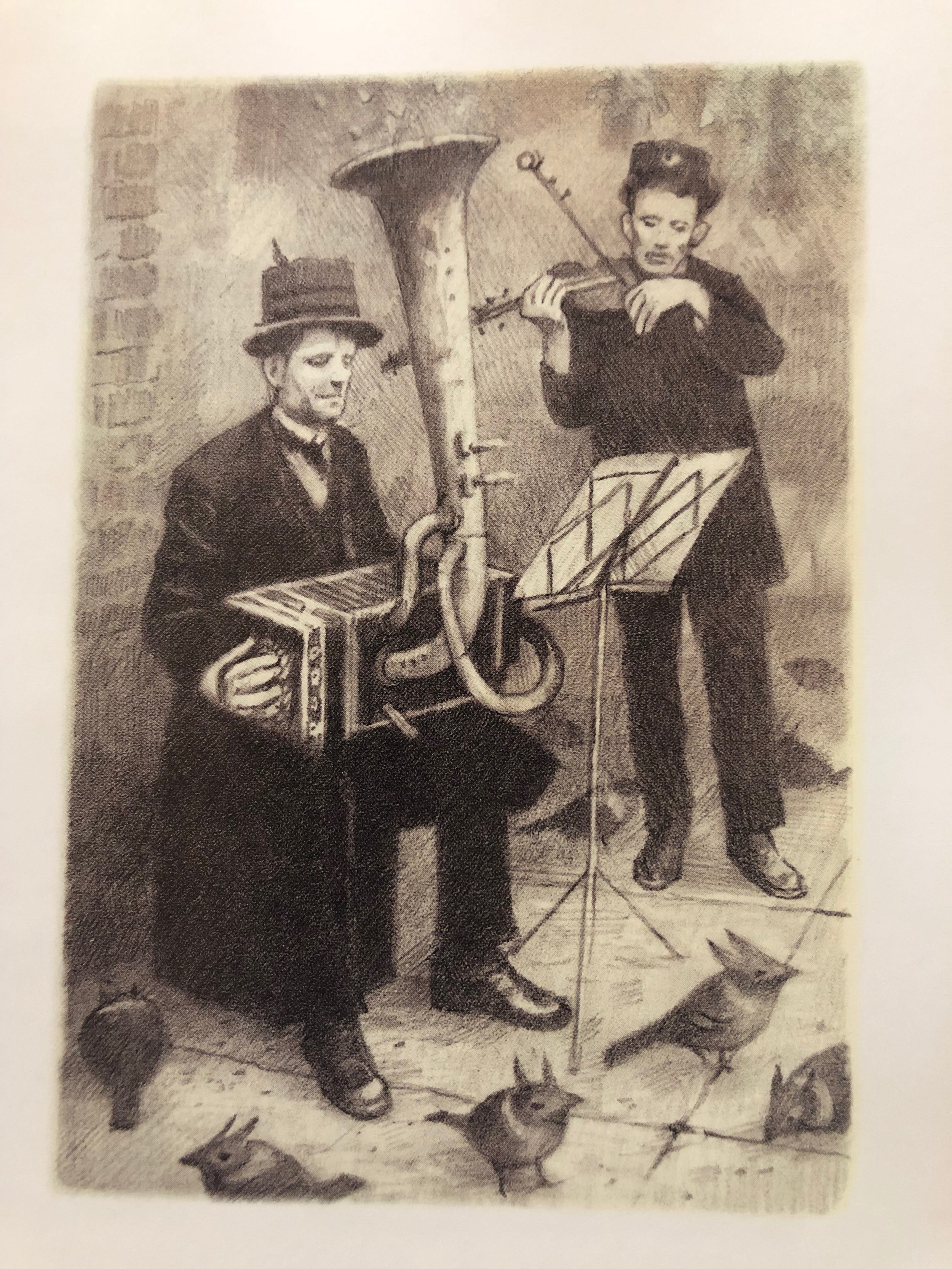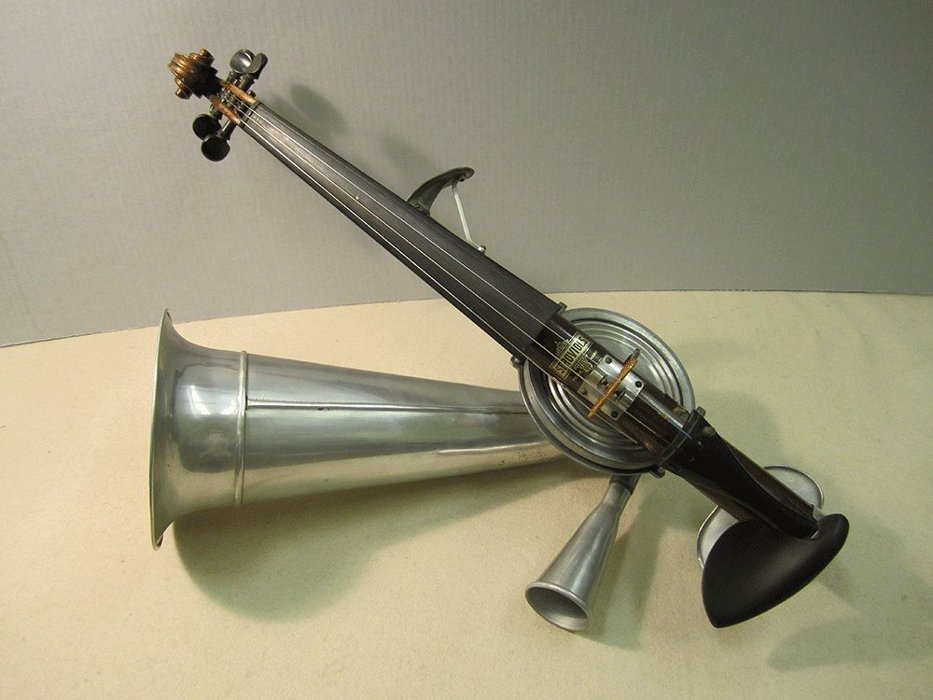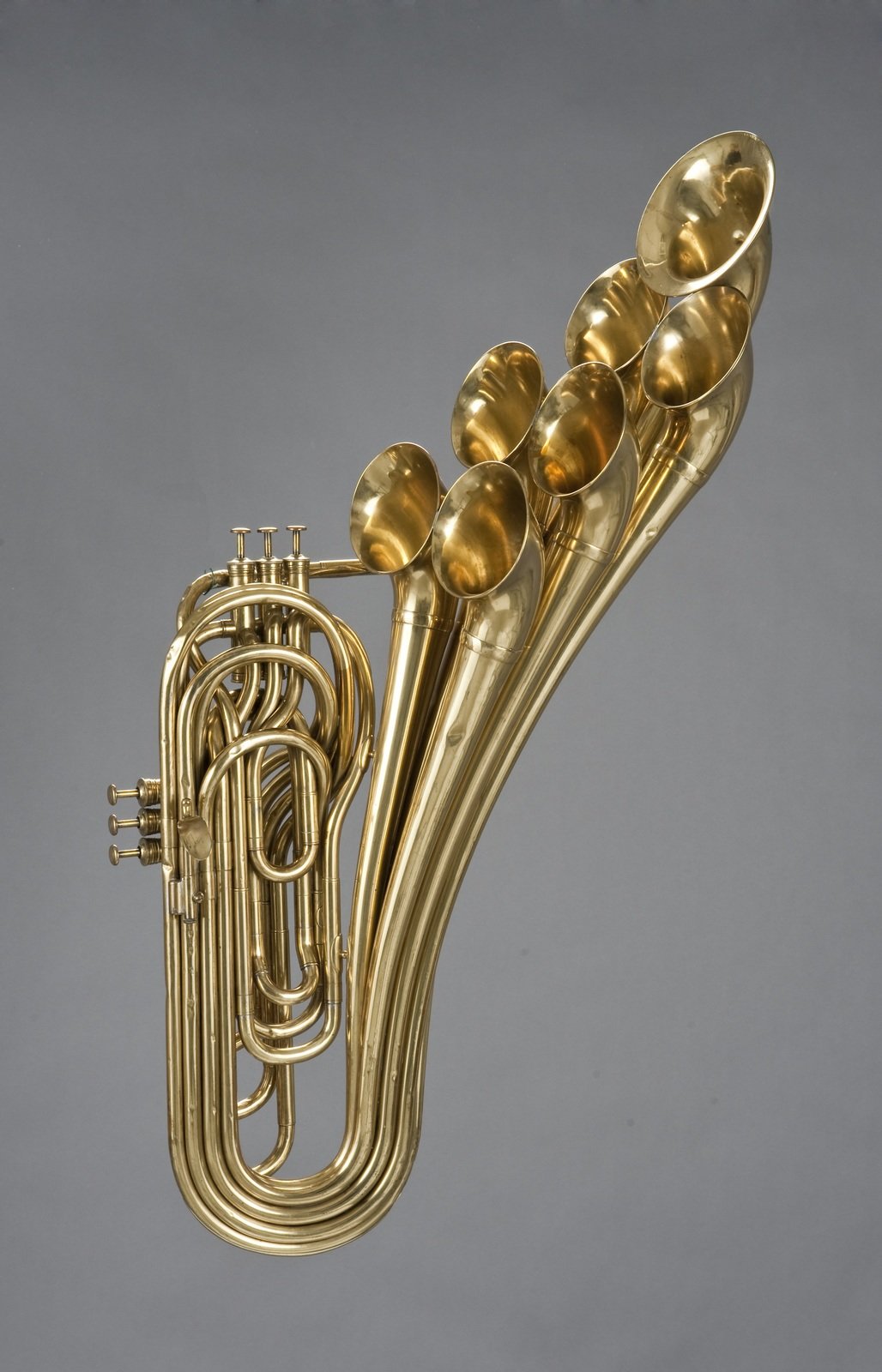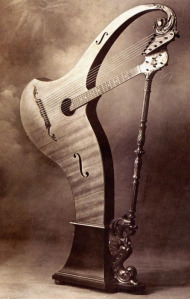As a parent of young children, it has been a pleasure to fall into the picture books of Mo Willems over the past few years. (As a family we made a tradition of eating pizza on Friday nights during COVID quarantine while watching his HBO special “Mo Willems and the Storytime All-Stars Present: Don’t Let the Pigeon Do Storytime!” (2020). Must have seen it about thirty times!) His works deftly and often poignantly explore the wide range and wild variability of human emotion, whether his subjects are frogs, squirrels, geese, dinosaurs, or (occasionally) humans. Rather than pigeon-hole (pun intended) emotions into strict ethical categories, he incorporates them within a relational narrative in which characters practice inter- and intrapersonal communication, giving voice to the richness of emotional experience.
Listen to my Trumpet!
by Mo Willems
Hyperion Books for Children (2012)
Picture: The Elephant & Piggie series (2006–16) chronicles the varied adventures of best friends Gerald the Elephant and Piggie the Pig in twenty-five books. Willems depicts all the characters in these stories in a simple style, replete with circles and ovals, lines and angles, bold outlines and solid colors. Usually appearing on a blank, white page, these characters have a sketch-book immediacy and simplicity, a characteristic that Willems uses to intentionally invite children to participate as co-creators, especially in activity books such as “We Are in an ART-ivity Book!” (2017) and Kennedy Center “Lunch Doodles” on YouTube (2020). Remarkably, the simplicity of these drawings provides the canvas upon which to depict astounding emotional details through facial expressions, body gestures, motion lines, written sound effects, and the size and style of font in the text boxes. On every page, every character is part of the emotional narrative, expressing and reacting to real-time events. “Listen to My Trumpet!” includes only Piggie and Gerald, as well as a golden trumpet and a wooden, three-legged stool. Piggie’s love of her gleaming trumpet is made clear by her ebullient face, quivering excitement, and the loving hug she bestows upon the instrument.
Text: There is no narrator throughout the Elephant & Piggie books, which are driven by monologues or, more often, dialogues. As each character talks, their words appear in a specifically colored speech bubble like a cartoon strip (gray for Gerald, pink for Piggie, etc.). Many pages contain no talking at all, allowing the illustrations to move the story forward, whether the characters dejectedly walk off the page, romp joyfully in the rain, blush with awkwardness, or simmer with jealousy. Willems takes his time, devoting a large number of pages to the moment-by-moment unfolding of the story. In “Listen to My Trumpet!” the dialogue of the two friends begins with generous amounts of exclamation points as Piggie enjoins Gerald to listen to her give a trumpet recital. As the noisiness of her performance crescendos, Gerald increasingly expresses himself through thought bubbles as his feelings of tension and discomfort increase.
Music: The moment that Piggie begins to play her trumpet, Willems gives it voice in the form of brash, orange text bubbles, shaped with sharp edges like fiery explosions, and connected by jagged, lightning bolt shaped lines. Using an enormous, thick, black font that looks as though the letters are being shocked by an electric eel, he presents the clamorous tones of the trumpet through onomatopoeic syllables. Willems’ imaginative “voicing” of the trumpet has a wonderful playfulness to it (reading it out loud to children is a blast!) and puts me in mind of a sort of overlap between the scat vocables of Ella Fitzgerald and the trumpet improvisations of Wynton Marsalis.
“LISTEN TO MY TRUMPET!” Copyright © 2012 by Mo Willems. First published by Hyperion Books for Children, a division of Disney Publishing. All rights reserved. Used with permission.
Gerald’s reaction to the sound of the trumpet is one of discomfort, a feeling only intensified by Piggie’s continued excitement and belief that her performance is going well. Contrarily, Gerald privately thinks “That is not music” and compares the sound of Piggie’s trumpet to his Aunt Molly with a cold. What’s more, the sheer force of the trumpet’s sound has the ability to physically knock Gerald around, pitching him repeatedly off of his stool and eventually tossing him like a leaf in the wind during Piggie’s “big finish”, a scene as hilarious and overblown as the comedy short “Overly Competitive Trumpeters” by Keegan-Michael Key and Jordan Peele.
“LISTEN TO MY TRUMPET!” Copyright © 2012 by Mo Willems. First published by Hyperion Books for Children, a division of Disney Publishing. All rights reserved. Used with permission.
This sort of physical buffeting is a common occurrence in the Elephant & Piggie series, however usually the roles are reversed. Gerald, who occasionally displays a rather choleric, irritable disposition, expresses himself through outbursts of emotion and, given his larger size and elephantine resonance, Piggie more often than not is bodily tossed about by Gerald’s powerful sighs, cries, exclamations, and sneezes. Significantly, their friendship withstands such storms, mainly because they give each other the benefit of the doubt and take time to move through uncomfortable emotions towards what is actually being communicated between friends.
But now wielding her trumpet, Piggie turns the tables, inundating Gerald with wave upon wave of powerful sound. Yet, as she makes clear before, during, and after her performance, the forcefulness of her playing is expressive of joy, of wanting to share something special with her best friend. It is this that causes Gerald the most consternation, especially when Piggie presses him for his honest feedback. After demurring several times, complimenting her on the shininess and loudness of her instrument, Gerald chooses to tell the truth, stating, “That was not music… Sorry…”. As explored in my post on “The Arrival” by Shaun Tan, noise is the critical category in which Gerald places this sonic experience; it is all loudness and power, confusing and chaotic, with none of the clarity, beauty, or tunefulness that he expects of musical performance. In fact it is more akin to the trumpeting of a sick elephant… which is closer to what Piggie was aiming at in the first place: “You think I am trying to make music?” she says. “I am trying to speak elephant! I want to be like you.” Her aim was never to make sounds that one would characterize as music, but rather to use an instrument to speak the language of her friend.
“LISTEN TO MY TRUMPET!” Copyright © 2012 by Mo Willems. First published by Hyperion Books for Children, a division of Disney Publishing. All rights reserved. Used with permission.
“Listen to My Trumpet!” hangs upon a simple generic miscommunication. Piggie completely disregarded the rules of “correct” trumpet playing from the start, and it is only by working honestly through a variety of powerful emotions (joy, nervousness, fear, confusion, worry, and shock, to name a few) that they discover the richness, the “musicality” of their relationship. Both characters had to figure out how to “listen” and to be willing to co-create new rules for the interpretation of sounds. How is the concept of “listening to music” overly prescriptive, moving too quickly to judgement at the expense of relationship and communication? How could the concept of “music” allow us to discover new ways of “listening” that provide a forum for truly hearing one another?















